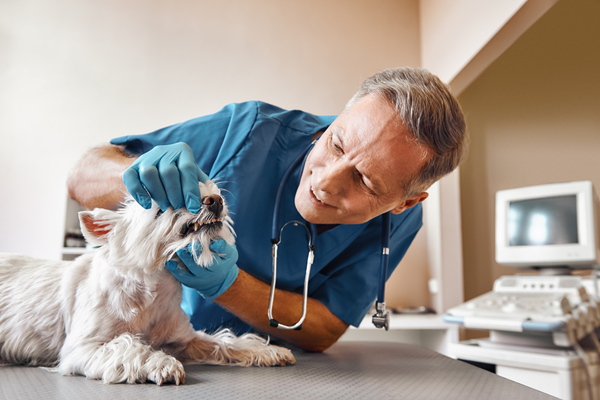
As pet owners, we do our best to make sure our pets are happy and healthy. But sometimes, our pets can have dental problems, like fractured teeth, that we might not notice right away. Fractured teeth can cause a lot of pain and lead to bigger health issues if they’re not treated.
What causes fractured teeth?
In dogs and cats, fractured teeth usually happen because of a few common things:
- Accidents or injuries: Pets can break their teeth if they fall, get hit by something, or have a rough playtime with another animal.
- Chewing on hard things: Many pets like to chew on things, but chewing on hard objects, like bones, rocks, or even hard dog toys, can break a tooth. If a dog or cat chews something too hard, it can crack their teeth.
- Old age: As pets get older, their teeth can become weaker and more fragile. Older pets are more likely to fracture a tooth.
How can a fractured tooth affect your pet?
A fractured tooth might seem like a small problem, but it can lead to serious health issues. Here are some ways a broken tooth can affect your pet:
- Pain: A broken tooth can hurt a lot, especially if it exposes the sensitive part of the tooth called the pulp. Dogs and cats are experts at hiding discomfort and can have a painful fractured tooth without showing obvious symptoms. However, if the pain is excessive, they may paw at their face or chew awkwardly.
- Infection: When a tooth breaks, bacteria can get into the tooth and cause an infection. If the infection spreads, it can lead to more serious health problems.
- Behavior changes: If your pet is in pain from a fractured tooth, they might act differently. They could become grumpy, more irritable, or avoid playing with you.
How can you tell if your pet has a fractured tooth?
If you think your pet might have a fractured tooth, the first step is to take them to the vet. The vet will check their teeth and gums to look for any signs of damage. Sometimes, fractured teeth aren’t easy to see, so the vet might need to do more tests, like:
- X-rays: These pictures of the teeth help the vet see if there’s any damage inside the tooth or under the gums.
- Oral exam: In some cases, the vet may need to sedate your pet to get a closer look at the broken tooth.
How are fractured teeth treated?
If your pet has a fractured tooth, the treatment depends on how bad the break is. Here are a few options your vet might recommend:
- Tooth extraction: If the tooth is badly broken and can’t be fixed, the vet may decide to remove it. Extraction is often the best option to prevent further pain or infection.
- Root canal: If the tooth can be saved, the vet might perform a root canal. This treatment removes the damaged part of the tooth and seals it to protect from infection. A root canal helps relieve pain and can save the tooth.
- Crowns or bonding: For less severe fractures, your vet might put a crown (cap) on the tooth or use bonding to restore it. This helps protect the tooth and prevent more damage.
- Pain relief and antibiotics: After the treatment, your vet may give your pet pain medication to help with any discomfort. If there’s an infection, they might also prescribe antibiotics to help clear it up.
- Follow-up care: After the treatment, your vet will likely want to check on your pet’s healing to make sure everything is going well.
How can you prevent fractured teeth?
Accidents happen, but there are some things you can do to reduce the chances of your pet fracturing a tooth.
- Avoid hard chew toys: Make sure your pet doesn’t chew on very hard things, like bones, sticks, or hard toys that could break their teeth. Instead, offer soft, pet-safe chew toys.
- Get regular vet checkups: Just like people, pets need regular dental checkups. Taking your pet to the vet for a dental exam can help catch problems early.
- Give proper chew options: Give your pet safe treats and chew toys that won’t risk breaking their teeth but still satisfy their natural chewing instinct. The Veterinary Oral Health Council (VOHC) is a good resource for safe chews.
Fractured teeth are a serious problem for pets, and can cause pain, infection, and trouble eating. By understanding the causes and recognizing the symptoms, you can help protect your pet’s teeth and keep them healthy. If you think your pet has a fractured tooth, take them to the vet right away. With the proper treatment, your pet can get back to enjoying their food and playtime in no time!
Don’t forget—keeping up with your pet’s dental health is important to their overall well-being. Regular vet visits and good oral care will help keep your pet’s smile bright and healthy.
